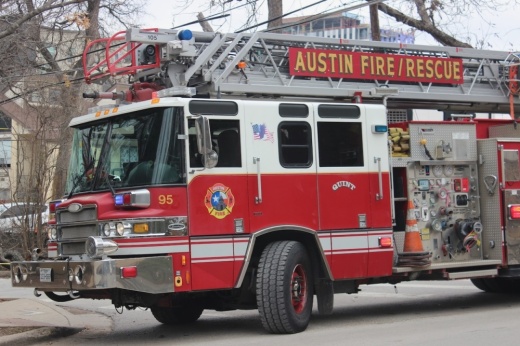The overview
City Council approved a pair of items April 13 that officials said they hope will put Austin in a better position to respond to potential fire emergencies. One, a proposal from District 6 Council Member Mackenzie Kelly, kicks off a renewed evaluation of the AFD's staffing and funding needs for its 12 aerial trucks, vehicles with 100-foot ladders and other equipment she said is “crucial” to responding to fires in taller buildings.
“In a growing city like Austin with numerous high-rise buildings and growing infrastructure, aerial trucks are essential for responding to emergencies and protecting the public, and I’m happy to support the fire department in this effort as they grow with the city,” Kelly said.
Council's passage of Kelly's resolution April 13 also jump-starts several other actions tied to the AFD, including:
- Reviewing the fire department's reserve fleet and whether more vehicles are needed;
- Prioritizing AFD improvements, such as upgrading fire and EMS stations, improving response times, and addressing staffing and service gaps; and
- Setting up future reports to council on the progress of the evaluations.
By the numbers
While Kelly stated the AFD has seen its fleet of standard fire engines grow “considerably” over the past two-plus decades—from 31 in 1996 to 47 today—Austin still has the same number of specialized aerial ladders on the streets as it did in the mid-1990s. Over the same time, the city's population nearly doubled, while the number of high-rise buildings jumped from an estimated 75 in 2000 to 230 today.
Without growing the AFD's stock, Kelly also said Austin's ratio of fire engines to aerial trucks is now the lowest among large Texas cities.
The AFD had purchased a new aerial truck in 2020, but the funding needed to staff the apparatus was later removed from the city budget. Kelly's resolution asks the city to find funding to staff that aerial truck and to consider buying and staffing another new aerial truck in the near future.
The actions come as Austin firefighters routinely exceed response time goals for emergencies in the city. While industry standards set eight minutes as a target response time for low- and medium-priority calls, AFD data shows its crews respond to such incidents after nine or 10 minutes more than 90% of the time.Response times are also above target levels for calls to high-priority emergencies and high-rise fires that may be addressed with aerials trucks. Kelly's resolution stated the AFD responded to high-priority calls within 11 minutes and 47 seconds 90% of the time versus a 10-minute, 10-second industry standard.
What's next
Decisions on the future of the AFD fleet including potential aerial expansions will be made in the coming months. At the same time, the city is also revising high-level preparation rules for one of the top natural threats Austin faces.
The second fire-related item approved by council April 13 updates Austin's policies related to the International Wildland-Urban Interface Code, civic guidelines for wildfire-prone areas. The code tweaks will result in additional consideration of wildfire risk as new developments move through city reviews.
“Wildfire is one of the top natural disaster risks in Austin. Wildfire experts warn that for Austin, it is not a matter of if, but when,” Alter said. “The International Wildland Urban Interface Code contains provisions and standards to address fire spread and enhance the defensibility of structures near high-risk wildfire areas.”
Alter said the amendments stemmed from previous council work on the topic and that further revisions of Austin's WUI Code are also now in the works. And while city policy will be adjusted to reflect the new standards, she also encouraged community members to take on wildfire readiness actions such as individual education, personal preparation and voluntary compliance with other best practices on the topic.





